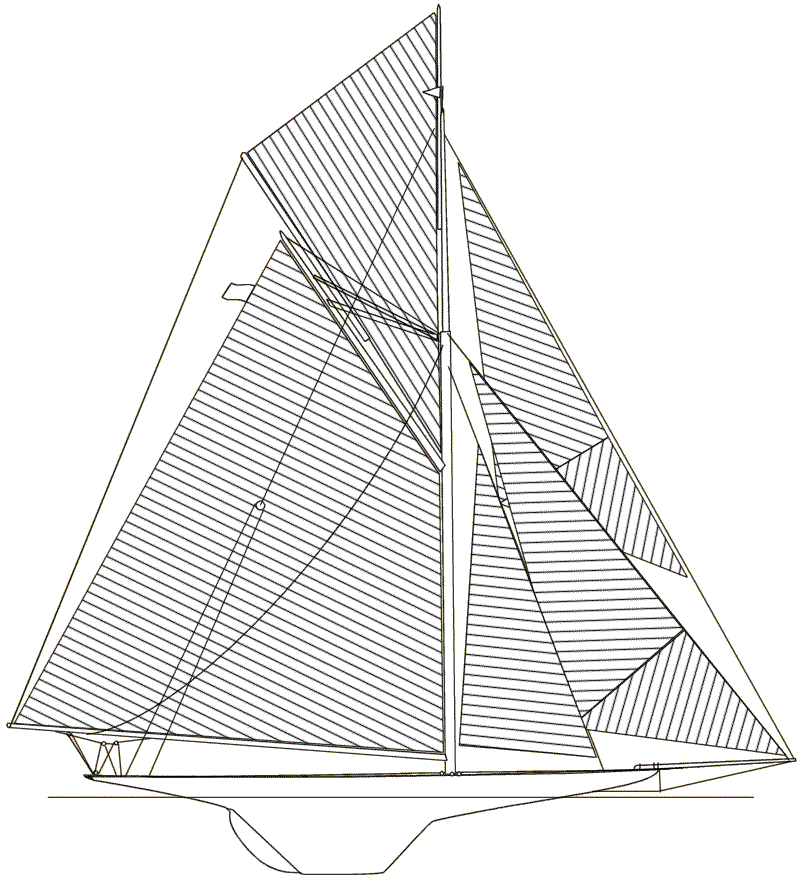Yves GARY Hits: 11730
Category: RELIANCE
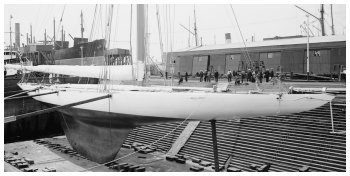 RELIANCE the ultimate skimming dish
RELIANCE the ultimate skimming dishTo meet the latest English creation, a new millionaires' syndicate had been formed in the New York Yacht Club as soon as Lipton's challenge was received and took upon itself the task of financing a ninety-foot, up-to-the-minute racing machine. This syndicate was composed of Cornelius Vanderbilt, William Rockefeller,...
... Elbert H. Gary, Clement A. Griscom, James J. Hill, W. B. Leeds, Norman B. Ream, Henry Walters, and P. A. B. Widener. The syndicate gave Herreshoff practically unlimited financial backing, and the result was a boat that was extreme in every 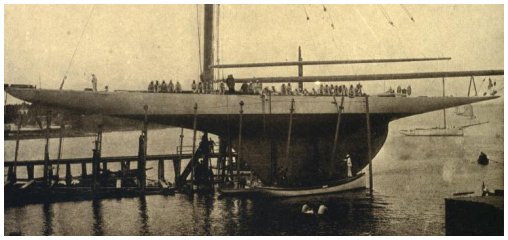 way. With the water line length practically the only fixed restriction, Herreshoff took all kinds of liberties with the other factors, and "went the limit" as regards ends and sail area. It is said that her first cost was $175,000, exclusive of her equipment or of the expenses of running her throughout the season.
way. With the water line length practically the only fixed restriction, Herreshoff took all kinds of liberties with the other factors, and "went the limit" as regards ends and sail area. It is said that her first cost was $175,000, exclusive of her equipment or of the expenses of running her throughout the season.
It will be remembered that in Independence, two years before, Crowninshield had experimented with the extremely flat, almost scowlike type of boat in a ninety- footer, and while the boat was practically a failure as a factor in the season's racing, she showed herself extremely fast on certain points of sailing and under conditions just suited to her. Herreshoff undoubtedly watched the flat boat's performance with considerable interest and noticed her good points, 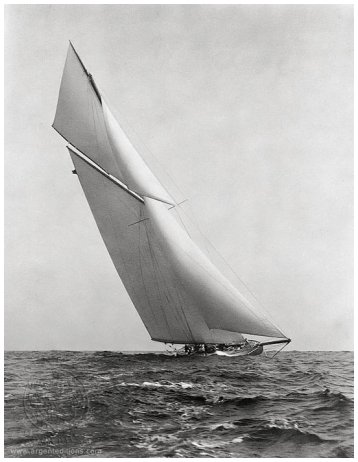 and in Reliance, as the new defender was christened, the influence of Independence was apparent, — at least, if we can judge by certain points of similarity.
and in Reliance, as the new defender was christened, the influence of Independence was apparent, — at least, if we can judge by certain points of similarity.
The new boat was an extremely flat craft, with shallow body, long and flat ends, and a very deep fin or keel. In other words, though she might not properly be called a scow, she was a "skimming dish" of the most pronounced type, with a fin keel attached. To show how extreme she was her forward overhang was twenty-eight feet long, and the after one twenty-six feet; and these long ends, with a flat floor, little deadrise, and moderately rounded bilges, gave very straight fore-and-aft lines, and a full waterline.
To see what she gained by this it need only be said that on a measured water line of less than ninety feet when on an even keel, when she was heeled so that her lee rail was just awash, she increased this water line length, or bearing surface, to 130 feet. Her quarter was very wide on deck, and she resembled aft "a saucer afloat". With it all, however, Herreshoff had "fined" the lines wonderfully, and there was nothing "brute-like" or heavy about the boat.
On this immense, flat hull with long water line, Herreshoff piled a mass of canvas such as was never before seen on a single sticker. Jumping some 3,000 feet from Columbia, the last defender, the Reliance spread 16,160 square feet of sail. This was over 2,000 square feet more than Fife had given Shamrock III, and when the two boats came together the Reliance towered well over her English rival. It was "some sail" to ask one mast to carry, but a steel spar was built for it with a wooden topmast telescoping inside, that managed to keep the canvas in shape when it didn't blow too hard, though the topmast broke once in one of the races during the summer. The spars and rig of Reliance were a wonderful piece of engineering work.
The new boat was built of Tobin bronze, and her general dimensions were: Length over all 143 feet 8 inches (as long as a 600-ton sailing ship), water line 89 feet 8 inches, beam 25 feet 8 inches, and draft about 20 feet, an immense chunk of lead being hung at the bottom of her fin.
The Reliance had been  launched April 12th, and even in her sail stretching spins showed evidence of great speed, particularly in smooth water and light airs.
launched April 12th, and even in her sail stretching spins showed evidence of great speed, particularly in smooth water and light airs.
|
|
|||||||||||||||||||||||||||||||||||||||||||||||||||
Plan created with DELFTSHIP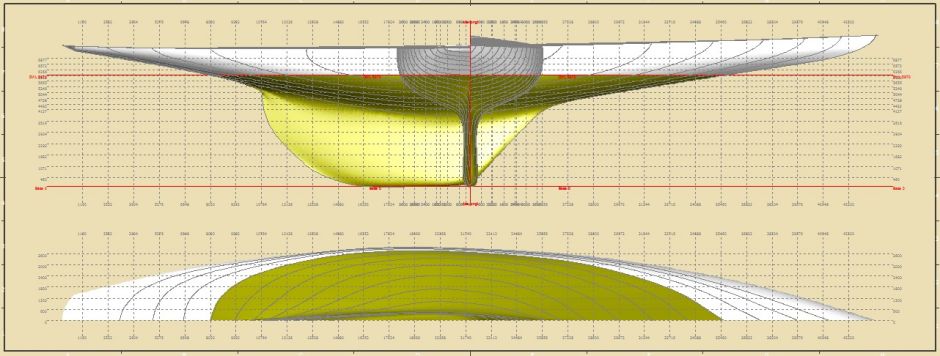

Download the MODEL FOR DELFTSHIP : Hull only
Download the MODEL FOR DELFTSHIP : Full model

